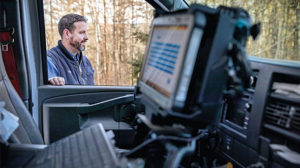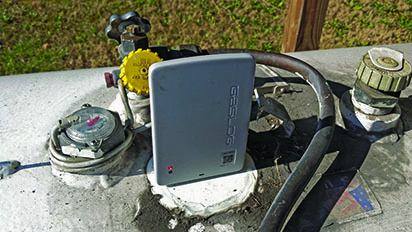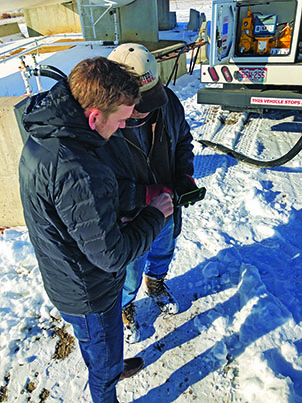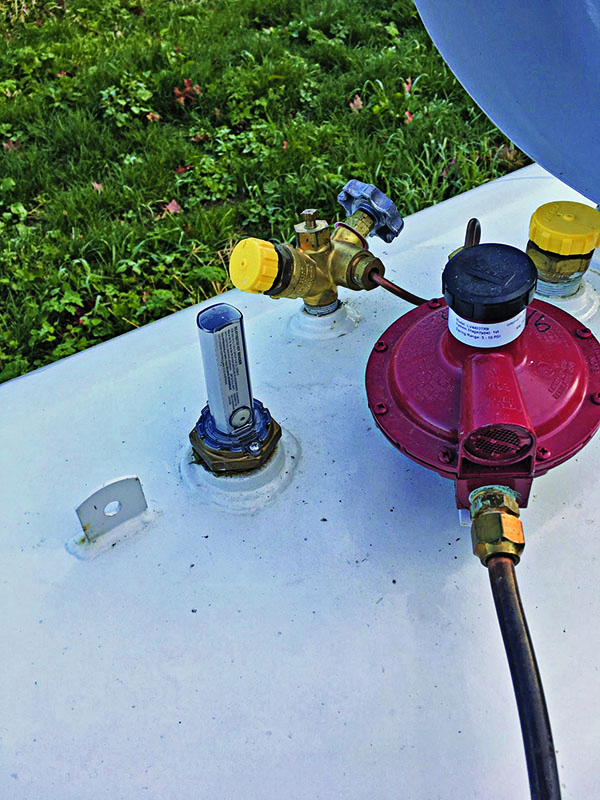Latest connectivity tech to benefit propane retailers
Although autonomously driven robotic bobtails have yet to hit the streets, you’ve probably seen an alphabet soup’s worth of seemingly indecipherable letters and numbers vaguely pertaining to propane-related electronic gadgetry.

LPG marketers often operate in areas covered only by 3G. Photo courtesy of Tank Utility
Cat-M, Cat-1, NB-IoT, WiMax, LPWAN, UMTS, LoRa, LPWA, SigFox, LTE, HSPA, GPRS, EDGE, 2G, 3G, 4G, 5G and 6G are generally becoming associated with through-the-air communications applicable to LPG.
Luckily you don’t need to know the details of these acronyms and abbreviations; they basically involve radio waves silently beaming connectivity-type technology with the ability to benefit propane retailers.
A system employing an above-referenced alphanumeric process “enables a new level of control and insight for fuel marketers through real-time tank level monitoring, automated analytics, deep back-office integration and on-call field services,” according to Chris Brablc, senior director of marketing at Tank Utility, a Boston-based provider of monitoring equipment.
Essentially emitting out of cellular telephone towers, “connectivity technology is always evolving, and that’s a great thing for everyone. Access gets faster, cheaper and more broadly distributed,” he says.
At present, most of the cutting-edge innovations are originating from heavily populated metropolitan areas, slowing propane’s pace of adoption.
“Because the mobile network operators always focus and begin their rollouts in dense urban areas with the most network traffic, rural deployment of the newest technology lags way behind,” says Brablc.

5G mobile networks will likely be most useful to a propane operation for vehicle tracking, truck systems, and driver and technician tablets. Photo courtesy of Propane Education & Research Council
“While Cat-M, NB-IoT and 5G are the bleeding edge of technology, many of our fuel marketer customers operate in territory that is still covered only by 3G networks – a technology that debuted in 2002,” he explains.
When considering the success of connected devices in the field for propane and oil marketers, the most important factors are coverage, reliability, ease of deployment and cost – “in that order,” Brablc points out.
“Coverage and reliability are first on the list because price doesn’t matter much if you can’t get the product to connect or stay connected,” he says. “Ease of deployment is a close second because deployment makes up more than half of the total cost associated with a solution, but it’s easy to forget about because it’s not listed on the price sheet. And finally, price matters because the total solution needs to cost less than the value it delivers, or it’s not worth deploying.”
Making waves with 5G
Referencing its status as the fifth generation of a commonly implemented mobile broadband signal, 5G is the latest spectrum to start gaining popularity. Its robust characteristics of faster speeds and heftier data content are widely viewed as being more practical for controlling the multitude of dense split-second decisions needed for autonomous automobiles rather than tracking the load of a customer’s propane furnace.

Tank monitors generally do not require the high speed and heavy data load of 5G networks. Photo courtesy of Anova
“5G can be used for vehicle tracking, truck systems, driver and technician tablets, etc.,” reports Sean Hughes, vice president of sales and business development at Otodata, an “internet of things” (IoT) operator headquartered in Montreal.
“5G is not going to be used for tank monitoring,” he elaborates. “It is designed for zero latency and high-throughput applications such as self-driving vehicles.” (Latency is the time-delay activation factor and throughput denotes data volumes.)
“For grabbing data off a propane tank, we’re not going to need that kind of reaction time,” concurs Todd Becker of BlueStreak, a software development partner of supply chain management solutions provider Vertrax.
“A lot of what we’re doing doesn’t require the huge bandwidth and speed that the new 5G wave technology is going to provide,” he says.
Even as 5G obtains increased coverage (it’s currently transmitting in more than 20 American metros with more on the way), “it’s not going to have a huge impact on the way our products work because those high speeds are not going to be available in those rural areas where we’re operating,” says Becker, adding that the propane applications will remain compatible with lower 4G, 3G and 2G frequencies.
Yet, 5G holds promise as a high-tech educational aid and repair guide by enabling augmented reality through video goggles.

Two enemies of remote tank monitoring are battery consumption and coverage issues. Photo courtesy of Tank Utility
“In the next decade, that type of augmented reality is going to be game-changing in how you train people and how you service the equipment in the field,” Becker predicts.
He describes a future situation in which “your glasses capture the tank that you’re about to work on. The content gets customized to the scenario you’re looking at in real time, and the instructions on what you’re supposed to be doing are literally overlaid onto the lenses that you’re looking through at the tank – pointing out what you need to do.”
Dispatching will be more efficient as sensor-directed bobtails receive instantaneous calls concerning customer will-calls. Additionally, “you’ll be able to react to changes in supply planning more quickly” and make the necessary route adjustments.
“With a push of a button, the owner of a propane company (in a 5G-friendly future) can see their inventory across their entire customer base and across their entire storage; they can do real-time supply and demand planning. We’re going to be able to do micro-forecasting house by house,” explains Becker. “All of the products are going to be able to leverage faster, better and more continuous communications.”
Becker does, however, harbor doubts about how quickly these inventions will be embraced by his colleagues.
“The propane industry tends to adopt these technologies a little slower,” he says.
Training the team
Because the only constant in the connectivity space is rapid change, choosing your technology partner is paramount, says Brablc at Tank Utility.
“It’s not a question of if the tech will change; it’s a question of when it will change,” he advises.
Cat-M and NB-IoT “are at the forefront of low-power, long-range, low-speed connectivity technology,” he says. “While this means they’re a good fit for things like tank monitoring or GPS trackers, the newness of this tech usually means the networks they run on have not been widely deployed and cannot offer the broad coverage provided by solutions that are more well established.”

Imagine one day using video goggles to service the equipment in the field or for training employees. Photo courtesy of Anova
Less expensive and less-encompassing than cellular, LPWAN (a low-power wide-area network) is similar to Cat-M or NB-IoT, but “it is even more prone to the lack of coverage that plagues newer technologies because no U.S. cellular carriers have chosen to support it,” according to Brablc.
With the major American cellular carriers each annually spending $2 billion to $17 billion on rolling out new network infrastructure, he contends, “It will be very hard for LPWAN to catch up and provide truly rural coverage without a similar level of investment.”
To implement a new tank monitoring program, according to Brablc, a propane marketer has to “train their team, allocate headcount, drive around their territory to deploy the system and commit time to rigorous data entry and quality control. To take it a step further, some solutions require the commissioning of antenna base stations by region (LPWAN) or access to the customer’s house or business to set up a network access point.”
He also notes that “because the effort required to deploy is significant, choosing a partner who understands and reduces or eliminates these costs is critical. Even though one solution might be cheaper than another, the cost of deployment and maintenance of a system can easily eliminate the initial cost savings.”
Enabling fundamental change
The recent merger of tank monitoring solution providers Anova and Silicon Controls (see page 8) bodes well for ongoing innovations in connectivity, says Robert Battye, North American vice president and COO of Gaslog, an Anova solution.
The merger brings both scale and the business analytics and transformation skills to help Anova customers capture the benefits of digital logistics, he says.
Battye views LPWAN as a critical component going forward and says the two enemies of remote tank monitoring are battery consumption and coverage issues.
“The massive growth in smart devices, along with the ability to rapidly and continuously collect data from tanks, valves, meters, household and industrial appliances, upstream storage, railcars, pipelines, trucks, staff and other supply chain components, will enable fundamental change in both the core profitability of logistics operations and, more importantly, the relationship with consumers and commercial customers,” Battye explains. “On one level, the opportunity for fundamental change lies at the heart of 5G and LPWAN.”
















